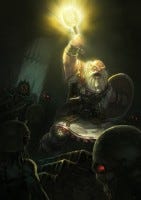3 Handy Tips for Choosing a Development Platform
Is the "best" the best for you? A few thoughts about technical considerations.

MMORPG's cover a huge spectrum of gameplay features, and many have different goals in mind. Some are social hubs, some are in-depth RPG's with heavy questing, while others serve the grind-fest and PvP crowds. Many developers want to include as many of these aspects as possible, in order to attract a larger playerbase. Every feature requires time and focus to develop, however, and must be considered when dealing with a limited timeframe and resources.
With these different features come technical considerations as well:
Do you go for high-spec, hardware intensive graphics?This can really do incredible things for your project. While expensive, it can be beautiful once finished, and will be a selling point for many people. If your game requires the latest graphics technology to run though, you might be losing out on the section of the market that doesn't have the latest computer hardware.
Are you running more of a hobbyist MMORPG?This tends to be the case in a lot of specialist circles, with games that support small playerbases of likeminded people. Your overall requirements technology-wise can be focussed on catering to that particular niche.
Do you want to allow mobile access?If your game runs off a program, or game disc, and requires heavy computing power, you might find yourself cut off from the ever growing market of mobile gaming.
Cell phones and tablet technologies are becoming an increasingly common substitute for the desktop. Many MMO's will add a community forum to keep their players-on-the-go in the loop, and even apps and other ways to access the game outside of the traditional computer. There is also a substantial market of "MMOs for low spec computers" that work relatively well across all operating systems, and are largely hardware irrelevant. This type is often intriguing for developers on a budget.
MUD games, for example, while scoffed at as a thing of the past, are still a thriving niche market. There are many still running successfully - my personal favorite often has more than 200 people online at any time, and offers everything I want from a game. The producers have included intricate roleplay devices, a huge and always expanding lore, a flexible, real-time combat system, bashing without an endgame for all those who want to kick, punch, stab, maul, and incinerate their way up the levels, and much much more. The text environment can take some adjusting to, but there is a lot to be said for the accessibility it offers to people of all technological ownership, and it can be cheaper to develop than a graphical game.
Working out what kind of features you want in your game, and the technological requirements to play it that come along with them, are vital in the earliest stages of development. They shape how and what you do throughout the entire process, from planning to funding to actual coding. It can be appealing to try to include many aspects at once, but every feature adds time and work to complete. Likewise, the fancier the graphics and capabilities, the more your potential players will have to invest in their computers. Striking a balance between all these different options is essential in making a successful game.
About the author:
Nicola Newton has played one of the world's most popular MUDs for years. She has contributed in a myriad ways, and worked as a volunteer for the company. When she's not dedicating herself to making her favorite game more enjoyable for others, she can often be found playing a chaos-wielding zealot.
About the Author(s)
You May Also Like







.jpeg?width=700&auto=webp&quality=80&disable=upscale)








